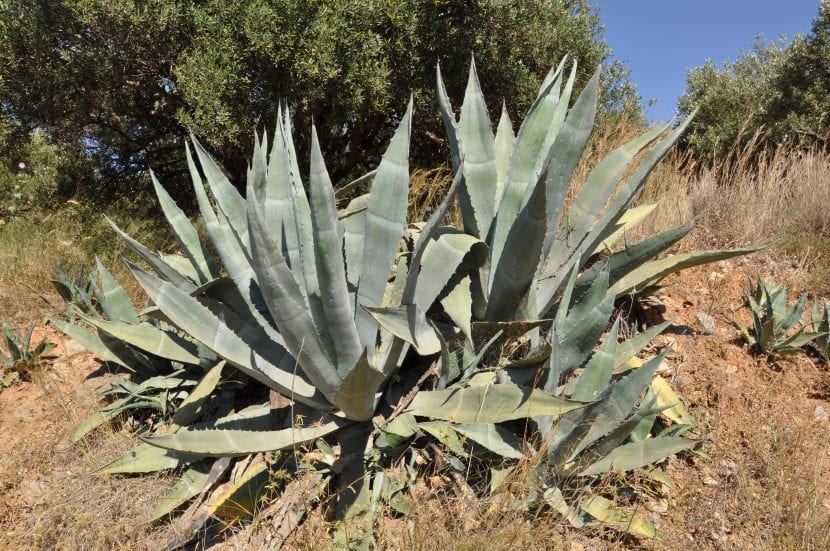
American agave
Agave is one of the plants that are most used in xerojardines, which they decorate since they are very young. They grow rapidly and multiply with amazing ease. They withstand drought, high temperatures, and there are also many species that resist light frosts.
Today it is much loved by collectors, since not only is the sale price low but its maintenance is very, very simple.
Agave Characteristics

agave shawii
The Agave is a genus of succulent plants in the Agavaceae family native to Mexico. It is known by the common names of pita, maguey, cabuya, fique, mezcal, or simply agave. Grows in a rosette of thick, fleshy, pointed leaves, often ending in a sharp needle. The edges are usually serrated, but there are some species, such as A. attenuata or A. stricta, whose leaf parts are practically harmless.
It blooms only once, producing an inflorescence made up of hundreds of flowers. After flowering, the plant dies, leaving the seeds and suckers that have sprung up from it. It is thus a monocarpic plant.
Main species
american a.
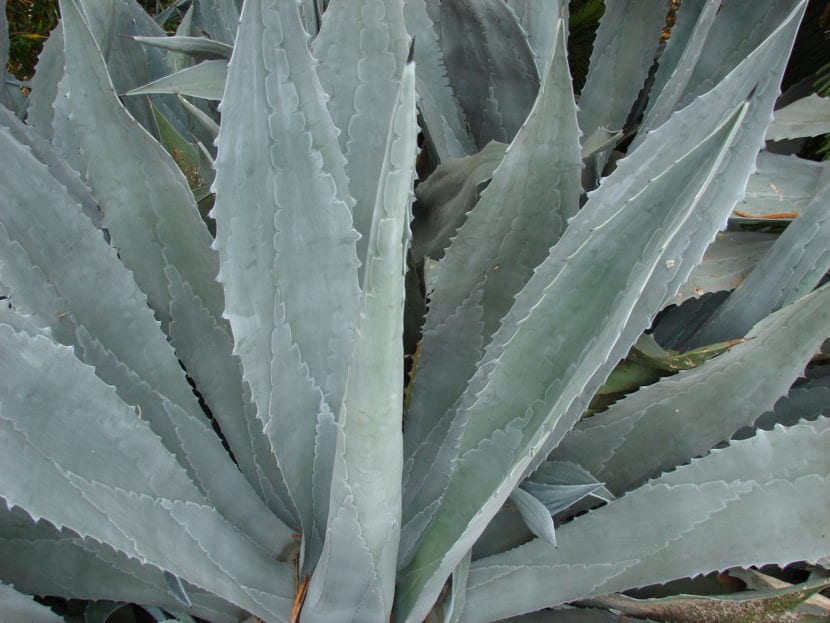
It grows to about 60-70cm tall. Its leaves can be bluish-white, greyish-white or variegated. It has spines of about 2cm at the edge and 5cm at the apex. It is used for the production of Mezcal, which is the sugary juice extracted from the sap of the fermented and distilled flower stem.
A. attenuata
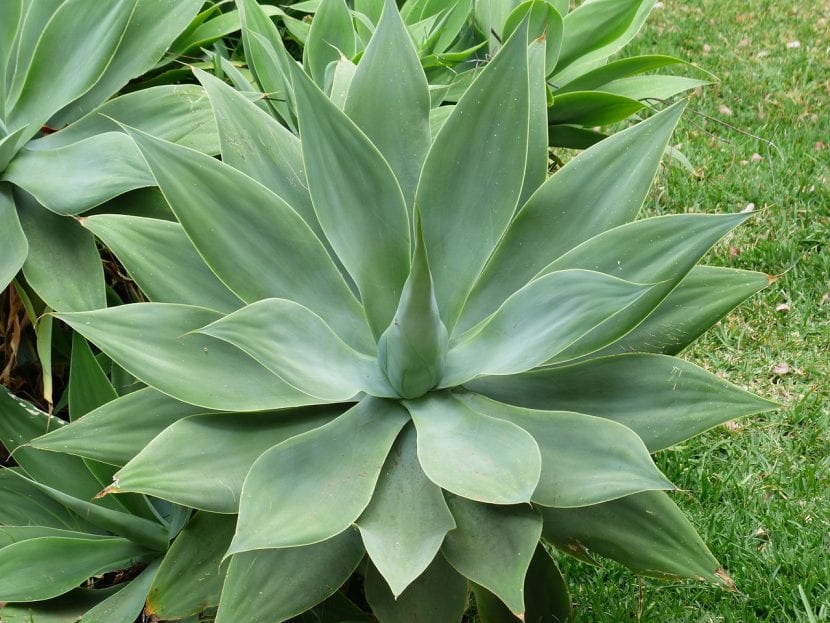
It is one of the most harmless species, if not the most. It grows to a height of up to 150cm. Its leaves are whitish-green in color, pointed and with smooth margins.
A. macroacantha
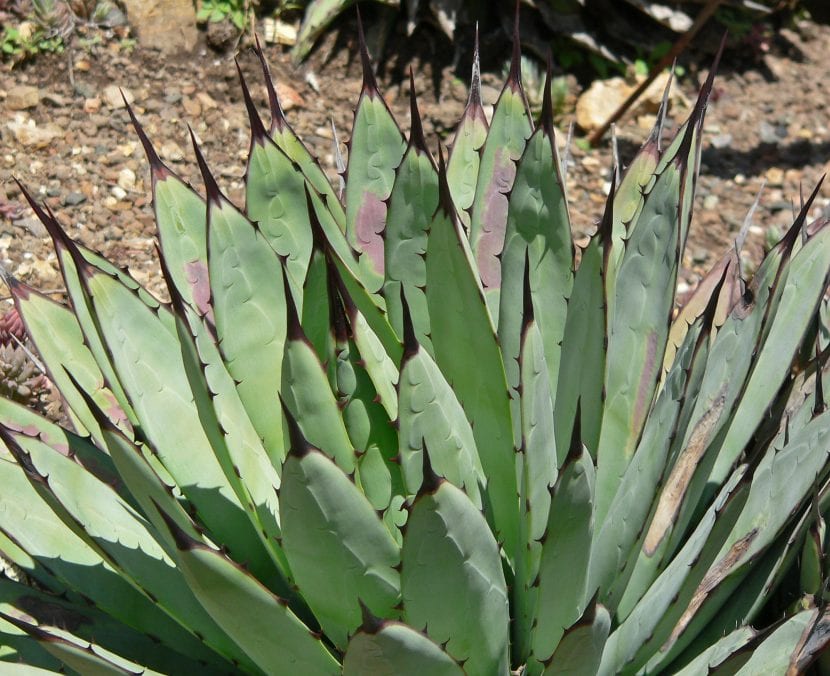
It reaches a height of about 50cm. Its leaves are of a very beautiful green-white color, and on its edges we find a series of black thorns up to 2cm; the apex is armed with a thick spine also black in color with a length of 4-5cm.
A. victoriae-reginae

It is one of the most curious species that does not usually exceed 30cm in height, so it is perfect to have in a pot. Forms a very dense and compact rosette of leaves, each of which has white lines that go from the apex to the center of the plant.
How do you take care of yourself?
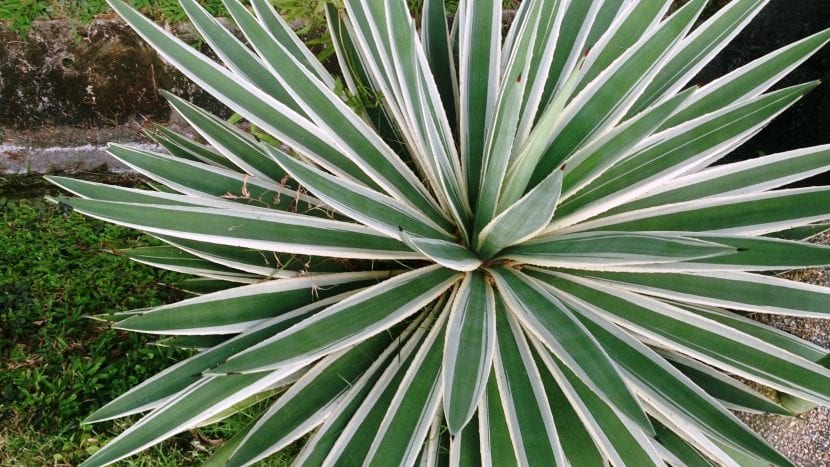
Agave angustifolia 'Marginata'
Would you like to have some specimens in your garden? Here we explain the care they need:
Location
The Agave is a plant that it must be placed outside, in full sun. The more hours of direct light it has, the better its growth will be.
Due to the size that it can reach, it is often planted as an isolated specimen, since over time it will grow suckers that, as they grow, will occupy twice as much space as that occupied by the mother plant.
Land
The garden soil must be limestone (pH 7), with very good drainage. In the event that it does not drain well, it is highly recommended to make a 1m x 1m planting hole and mix equal parts universal growing medium with perlite. To be sure that there will be no problems in the future, before filling the hole you can put a shading mesh around it, covering the edges; so the soil in your garden will not mix with the one you have put in.
Irrigation
It resists drought very well, but during the first year it will be necessary to water it once or twice a week so that your root system grows long enough.
Subscriber
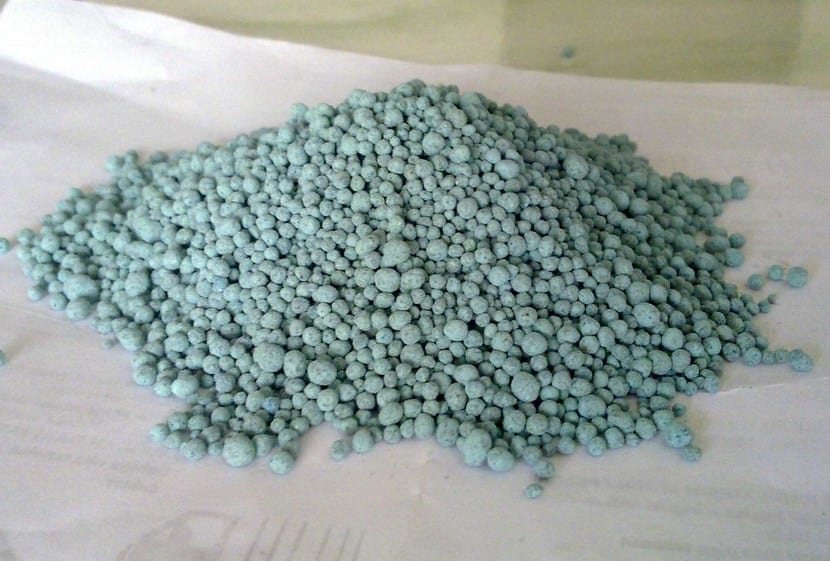
It is not usually paid, although During spring and summer it is advisable to do it by adding a tablespoon of Nitrofoska and mixing it a little with the earth. before watering once a month.
Planting time
The best time to spend it in the garden is in spring, or in summer if you live in an area with a mild climate.
Multiplication
Seeds
- The first thing to do is acquire the seeds in spring or summer.
- Then a pot is prepared with vermiculite or sandy substrate.
- Then, the seeds are placed, burying them only a little, enough so that the wind cannot carry them away.
- Finally, irrigated using a sprayer.
Young
The suckers can be separated from the mother plant as soon as they are of a manageable size. Once collected, they can be sown in pots with sandy substrates or in other parts of the garden.
Rusticity
Most species withstand frosts down to -3ºC. The A. attenuata it is somewhat more delicate: it supports up to -2ºC as long as it is for a short time. They all need protection against hail.
Can you have a potted Agave?
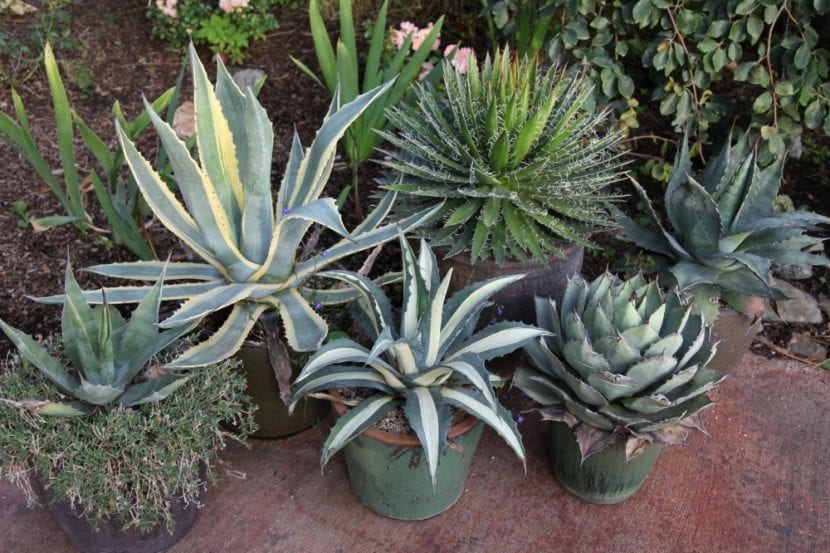
Image – Towerflower.com
I do not recommend it. For a while it can be, but there will come a time when it will not be able to continue growing and, if that happens, it can weaken and end up dying.. Even so, if you want to decorate your patio with a copy, even temporarily, then we tell you its care:
- Location: full sun.
- Substratum: you can use universal growing medium mixed with 30% perlite.
- Irrigation: twice a week in summer, and every 15-20 days the rest of the year.
- Subscriber: in spring and summer, with a fertilizer for cacti and succulent plants following the instructions specified on the package. You can also choose to add a small spoonful of Nitrofoska every 15 days.
- Transplant: every two years.
For what do you use it?
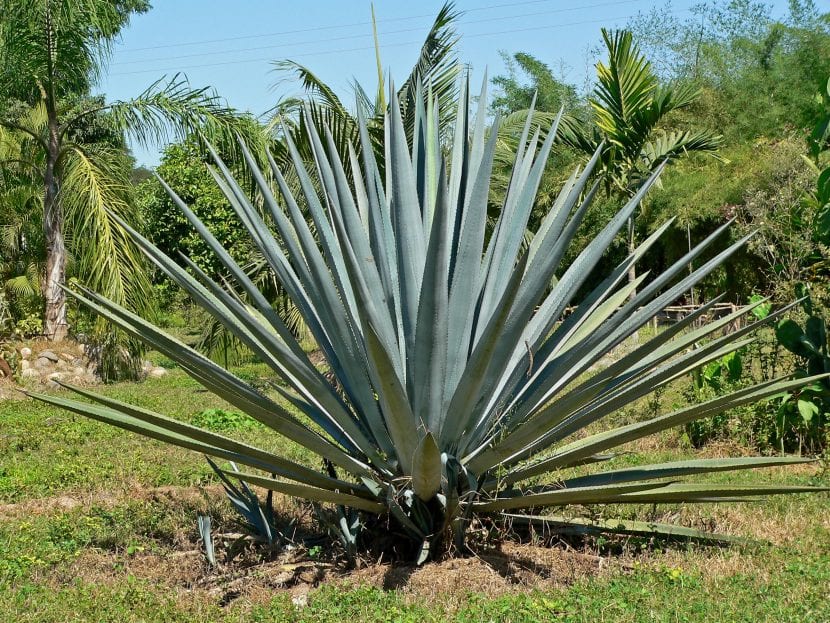
Tequilana agave
Ornamental use
The agave it is used mainly as an ornamental plant. There are different very decorative and elegant species, which are wonderful in gardens of cacti and similar plants. It is also widely used to decorate the patios and terraces of hotels, even if they are near the sea.
Culinary uses
Our protagonist has been used for centuries, especially in Mexico where humans take advantage of it to feed themselves. And it is that all its parts are used:
- Flower stems: they are consumed fresh, roasted or cooked.
- Stem (what we would call trunk): it is eaten roast.
- The bases of the leaves: they are also eaten roasted.
- Sap: it can be consumed fresh or concentrated in the form of honey. It is also used to obtain fermented or stimulating drinks and spirits.
Agave syrup
From A. tequilana, better known as blue agave, you get a sweetener called agave syrup or agave syrup. The sap of these plants is rich in fructose, but since it does not contain glucose, it does not increase blood sugar levels. Although, yes, if consumed in excess can increase the levels of uric acid, triglycerides and cholesterol.
How is it used?
It's used just like sugar: in cookies, cakes, cakes, drinks, coffees, etc. The equivalent is 6ml of syrup for each sachet of sugar.
Its benefits are:
- It contains vitamins (A, B, B2 and C), and essential minerals such as iron or phosphorus.
- Stimulates the growth of the intestinal flora.
- Inhibits the growth of pathogenic bacteria such as Salmonella.
- Helps prevent osteoporosis as it increases the absorption of calcium and magnesium.
Agave is a very interesting plant, don't you think? 🙂